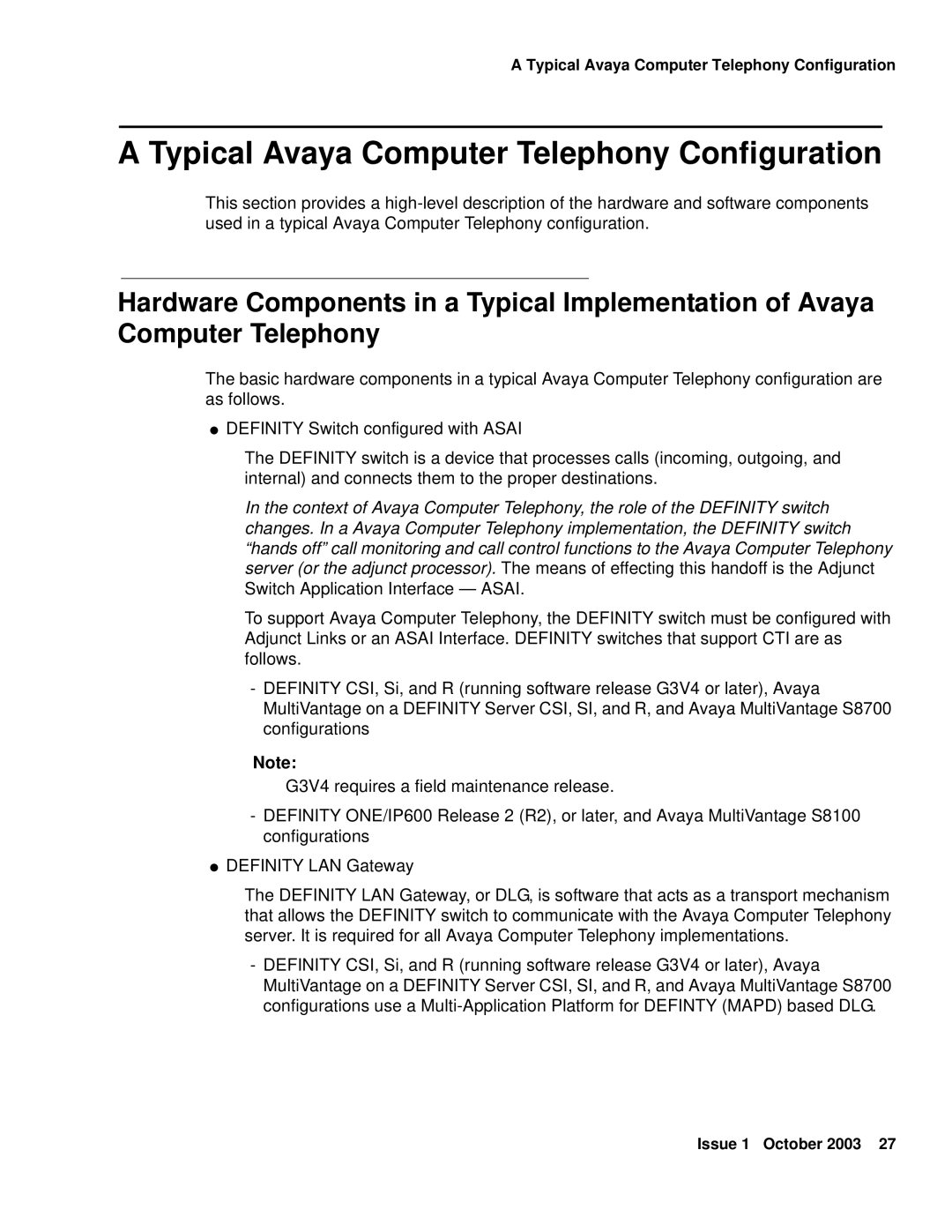
A Typical Avaya Computer Telephony Configuration
A Typical Avaya Computer Telephony Configuration
This section provides a
Hardware Components in a Typical Implementation of Avaya Computer Telephony
The basic hardware components in a typical Avaya Computer Telephony configuration are as follows.
●DEFINITY Switch configured with ASAI
The DEFINITY switch is a device that processes calls (incoming, outgoing, and internal) and connects them to the proper destinations.
In the context of Avaya Computer Telephony, the role of the DEFINITY switch changes. In a Avaya Computer Telephony implementation, the DEFINITY switch “hands off” call monitoring and call control functions to the Avaya Computer Telephony server (or the adjunct processor). The means of effecting this handoff is the Adjunct Switch Application Interface — ASAI.
To support Avaya Computer Telephony, the DEFINITY switch must be configured with Adjunct Links or an ASAI Interface. DEFINITY switches that support CTI are as follows.
-DEFINITY CSI, Si, and R (running software release G3V4 or later), Avaya MultiVantage on a DEFINITY Server CSI, SI, and R, and Avaya MultiVantage S8700 configurations
Note:
G3V4 requires a field maintenance release.
-DEFINITY ONE/IP600 Release 2 (R2), or later, and Avaya MultiVantage S8100 configurations
●DEFINITY LAN Gateway
The DEFINITY LAN Gateway, or DLG, is software that acts as a transport mechanism that allows the DEFINITY switch to communicate with the Avaya Computer Telephony server. It is required for all Avaya Computer Telephony implementations.
-DEFINITY CSI, Si, and R (running software release G3V4 or later), Avaya MultiVantage on a DEFINITY Server CSI, SI, and R, and Avaya MultiVantage S8700 configurations use a
Issue 1 October 2003 27
